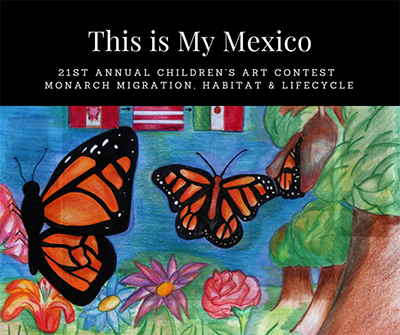 The 21st Annual “This is My Mexico” Children’s Art Contest, brought to you by the Institute of Mexicans Abroad (IME), is open for submissions until Friday, October 13, 2017.
The 21st Annual “This is My Mexico” Children’s Art Contest, brought to you by the Institute of Mexicans Abroad (IME), is open for submissions until Friday, October 13, 2017.
The theme of this year’s contest is “The Monarch and its Lifecycle in North America”.
The contest is an invitation for all children ages 6 - 14 “to know and draw the Monarch, its habitat and migration through three countries, the stages of its life and all the challenges it faces on its path to fulfill its destiny.” Drawing and paintings made with the materials of the artist’s choice must be submitted on a 12” x 12” square cardboard or artboard, with the registration form attached to the back. Artwork may be submitted to the nearest Mexican Embassy, Consulate of Mexico or Delegation of the Ministry of Foreign Affairs, by the October 13 deadline.
Twelve winning artworks and fifty “honorable mentions” will be selected from around the world to receive prizes and be published in the Institute of Mexicans Abroad 2018 calendar. These sixty-two pieces will also comprise an itinerant exposition that will debut in Mexico City, then travel around the world for display.
All winners will be announced online Monday, Nov. 14.
Download the entire information packet, with contest rules and the entry form, here, or visit www.ime.gob.mx/esteesmimexico2017, where this information may be found in Spanish.

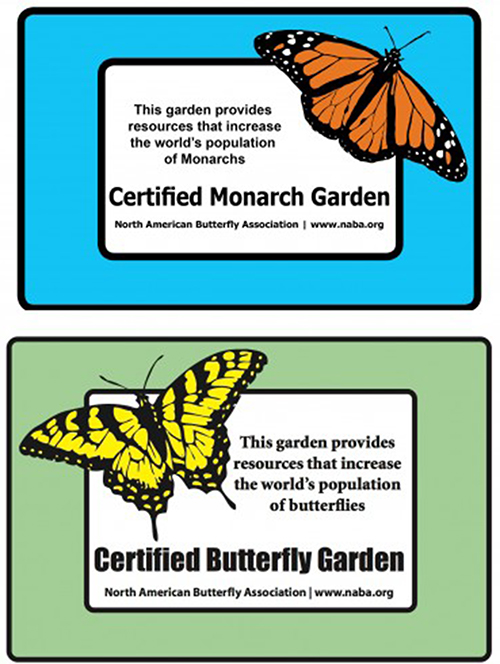 Gardening for butterflies is an honorable undertaking. Whether you are a first-time gardener or an experienced one, you should know that all gardening is a great experiment. Do not be discouraged if at first you do not succeed, have difficulty finding native plants, or do not produce a bumper crop of caterpillars right off the bat. Trust that in Nature’s perfect timing, butterflies will find your garden and reward your efforts.
Gardening for butterflies is an honorable undertaking. Whether you are a first-time gardener or an experienced one, you should know that all gardening is a great experiment. Do not be discouraged if at first you do not succeed, have difficulty finding native plants, or do not produce a bumper crop of caterpillars right off the bat. Trust that in Nature’s perfect timing, butterflies will find your garden and reward your efforts.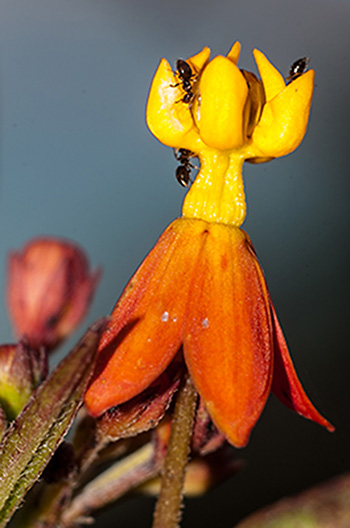 This incredible plant features one of nature’s most complex flowers, comparable only to the magnificent orchid. The Monarch appears to be fashioned for this flower, since the anatomy of it can form a deathtrap for smaller butterflies, bees and wasps lacking the power to pull free of the ‘hood and horn’ structures that hold and protect the sought-after pollinia, or pollen sacs. The five pair of hood-and-horn structures that form the corona, or crown, of the flower are also useful in identifying milkweed species, whose blossoms vary by size, shape and color.
This incredible plant features one of nature’s most complex flowers, comparable only to the magnificent orchid. The Monarch appears to be fashioned for this flower, since the anatomy of it can form a deathtrap for smaller butterflies, bees and wasps lacking the power to pull free of the ‘hood and horn’ structures that hold and protect the sought-after pollinia, or pollen sacs. The five pair of hood-and-horn structures that form the corona, or crown, of the flower are also useful in identifying milkweed species, whose blossoms vary by size, shape and color.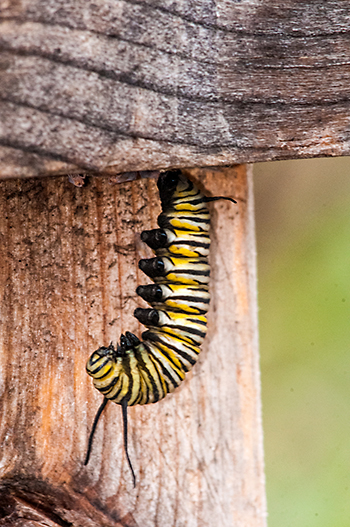
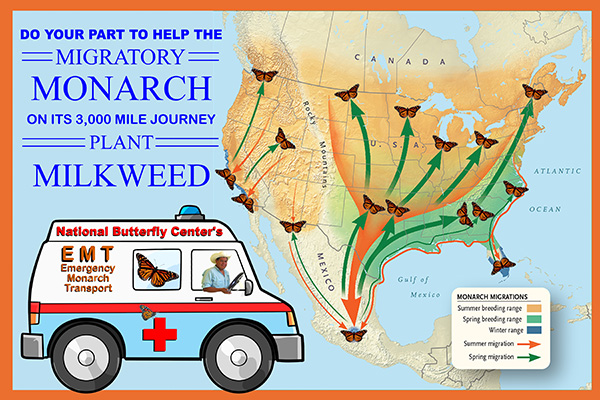
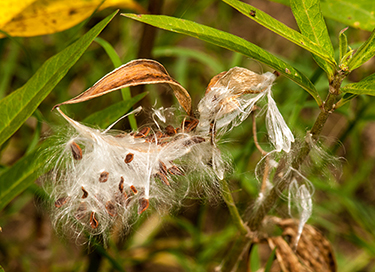
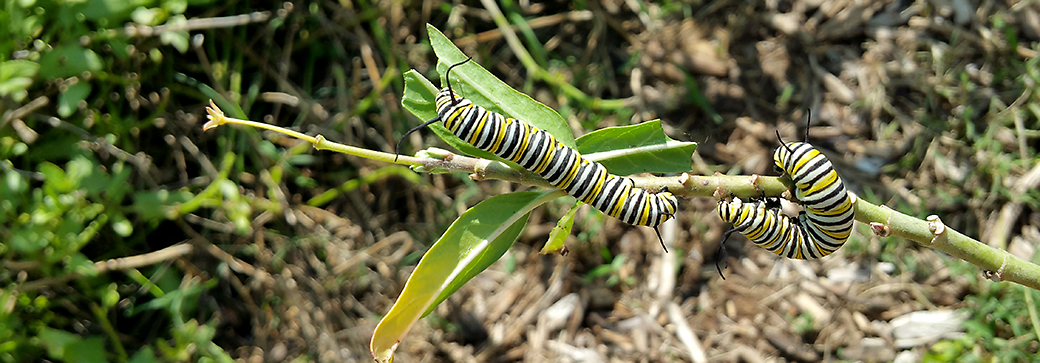 Too often, people mistake the hungry “worms” devouring their gardens plants for pests, instead of recognizing them as baby butterflies (and sometimes moths). If you choose to spray them with pesticide to save your plant, neither the caterpillars nor the plant will fulfill their destiny. After all, caterpillars are not some strange, destructive parasite; they are simply butterflies in a different stage of their lifecycle.
Too often, people mistake the hungry “worms” devouring their gardens plants for pests, instead of recognizing them as baby butterflies (and sometimes moths). If you choose to spray them with pesticide to save your plant, neither the caterpillars nor the plant will fulfill their destiny. After all, caterpillars are not some strange, destructive parasite; they are simply butterflies in a different stage of their lifecycle.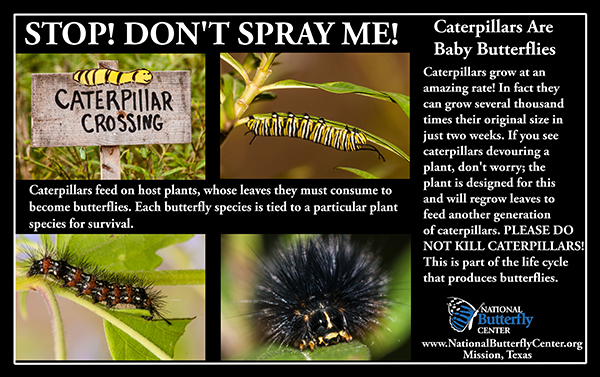 DOWNLOAD ENGLISH SIGN
DOWNLOAD ENGLISH SIGN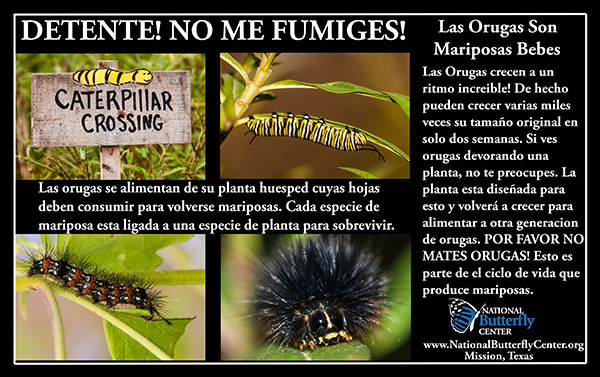
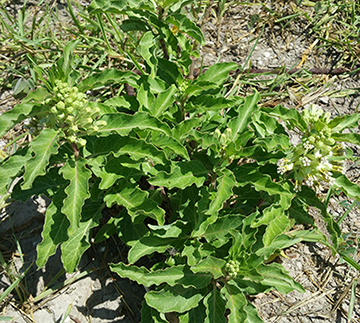 Native milkweeds are most commonly found in the wild. Some are easy to locate, transplant and/or cultivate, while others are not. All native milkweeds are becoming more scarce in the wild as the result of severe weather conditions such as drought, land development and the widespread use of herbicides. Wholesale habitat destruction and, specifically, the disappearance of native milkweeds may be the greatest challenge Monarchs face for survival. In order to give Monarchs a fighting chance, we need to reverse this trend and restore the native landscape, wherever possible.
Native milkweeds are most commonly found in the wild. Some are easy to locate, transplant and/or cultivate, while others are not. All native milkweeds are becoming more scarce in the wild as the result of severe weather conditions such as drought, land development and the widespread use of herbicides. Wholesale habitat destruction and, specifically, the disappearance of native milkweeds may be the greatest challenge Monarchs face for survival. In order to give Monarchs a fighting chance, we need to reverse this trend and restore the native landscape, wherever possible.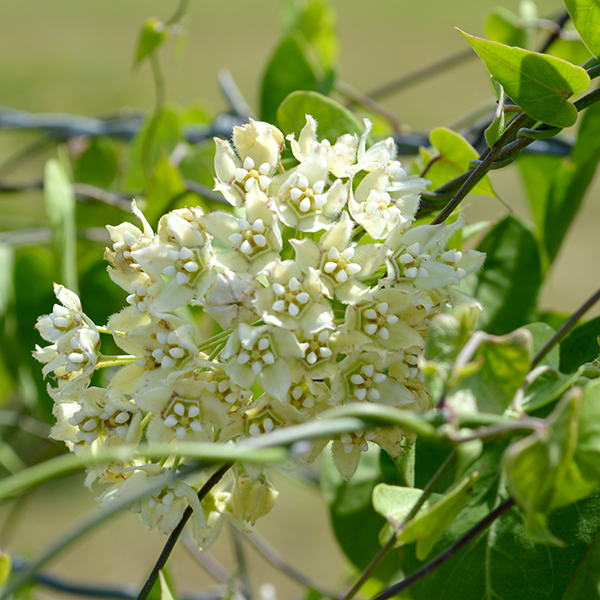 Monarchs are in need of habitat that will sustain their lifecycle. This means they need host plants (milkweed) and seasonal nectar plants that will bloom in the spring, summer and fall.
Monarchs are in need of habitat that will sustain their lifecycle. This means they need host plants (milkweed) and seasonal nectar plants that will bloom in the spring, summer and fall.